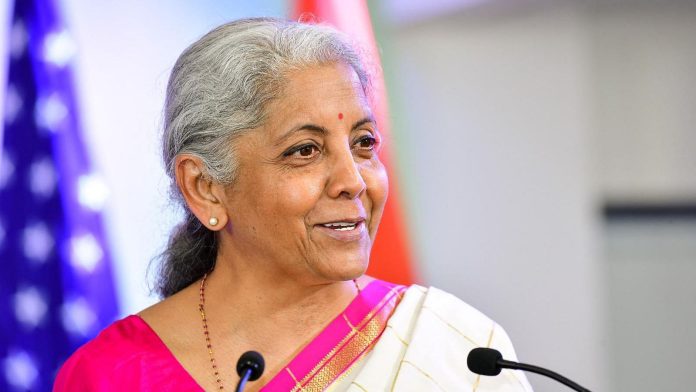New Delhi: Nirmala Sitharaman highlighted that while numerous capital expenditure (capex) projects traditionally have extended gestation periods, ranging from 24 to 36 months or even more, the finance ministry’s monitoring indicates optimal project development occurs when the capex is utilized within a 12-month timeframe.
Finance Minister Nirmala Sitharaman has outlined the government’s strategy to invest in shorter-duration projects, aiming to maximize the utilization of the record-high capital expenditure allocated in the interim budget. The focus is on accelerating the development of the country’s infrastructure.
During an interview with Mint, Sitharaman highlighted that despite many capital expenditure (capex) projects having extended gestation periods, typically ranging from 24 to 36 months or even more, the finance ministry’s monitoring has revealed that optimal project development occurs when the capex is utilized within a 12-month timeframe.
“Capital expenditure is typically allocated for long-term or medium-term projects, where funds are utilized to create assets over a period of 24 to 36 months or even longer. However, the stipulation we have is that the allocated funds must be spent within 12 months. My monitoring has consistently shown that projects excelled when the capex was efficiently utilized within this timeframe. This has been a key factor in successful utilization,” explained the finance minister.
The interim budget has elevated the central capital expenditure (capex) allocation by 11.11% (over Budget Estimate for FY24) to ₹11.11 trillion for the development of infrastructure projects in the fiscal year starting from April 1. This builds on significant increases in previous years aimed at boosting economic growth. While capex has increased for FY25, the growth rate is comparatively slower than in preceding years, with growth percentages of 37% in FY24 (over the previous year’s Budget Estimate), 24% in FY23, and 40% in FY22.
The finance minister clarified that the slower growth rate is not attributed to a decrease in the absorption capacity of implementing agencies but rather stems from the already elevated levels of capex. She emphasized that capex has surged from ₹3 trillion to ₹10 trillion over the past few years, and the growth on this higher base will now be proportionate. The 11% increase from this higher base is considered substantial, amounting to ₹11 trillion, which accounts for approximately 3.4% of the GDP.
Finance Minister Sitharaman mentioned positive indications of a resurgence in private-sector investment, particularly in emerging sectors like renewables and those covered by productivity-linked incentive (PLI) schemes.
She stated, “…investments are flowing into those areas. There is a clear uptick. However, if the focus is solely on traditional sectors like cement and old steel factories, then the upswing in investment is yet to materialize.”
The finance minister also highlighted an increase in capital expenditure by states, pointing to the rise in central credit available to them under the 50-year interest-free special assistance scheme, reaching ₹1.3 trillion. The first two years witnessed successful completion and full utilization of the outlay. For the current year, states may utilize the scheme to finalize projects where significant progress has already been made using funds from the union government over the past two years.

